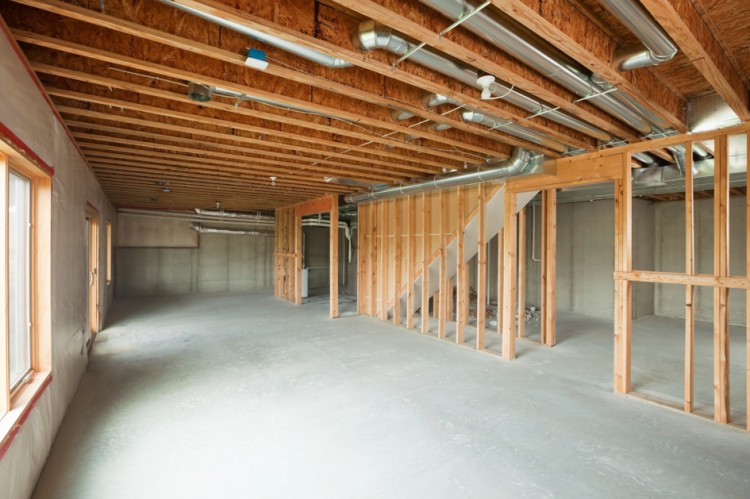
It can be a thrilling experience to get started on your search for a new home. But it’s hardly a simple process, and even if you find a home that you’ve fallen in love with, it’s important to look past the excitement and take an objective look at what would be needed to make it comfortable and safe. Even after making sure that the home will accommodate your kitchen plans and enormous TV setup, be sure to properly check an often-overlooked space: the basement. A home is a major investment—making sure that the basement is in good condition will not only make it useable, but it will also save you a lot of trouble in the long run!
What Should I Look for When Checking a Basement?
When a basement comes to mind, you may think about how much stuff you can store in there. But there are some factors that you should consider before buying that home with a basement, especially the presence of moisture. By checking for five important factors, you can give yourself a clearer idea of whether you’ve found your dream home and if it will be worth your investment!
Let’s take a dive into the 5 things to check before buying a home with a basement…
1. Basement Cracks
Have you noticed cracks in the basement wall or floor? They might seem harmless and easy to overlook, but these cracks can be signs of foundation problems. If those cracks lead to the outside, they can become avenues for groundwater intrusion when it rains, and the water table rises. If you should spot cracks in the basement, it is highly recommended that the home’s foundation gets inspected.
Furthermore, basement cracks can be signs that the home does not have proper waterproofing. Whenever it rains and water comes to sit against the foundation, there is a rise in what’s called hydrostatic pressure. Hydrostatic pressure created by water sitting against the foundation can create those cracks.
2. Humidity
One way that moisture may be present in the basement is humidity. Even if water is not collecting in the basement as a liquid through basement cracks, it can still seep into the basement because of how concrete is porous. When it rains, due to hydrostatic pressure, the water outside the foundation will seek out the path of least resistance, even if it means seeping through your concrete as moisture vapor. That moisture vapor can seep into your basement and increase the humidity in your basement. But it does more than just that—that humidity can then also reach your home’s living spaces above, ultimately changing the comfortability of your home, and opening the door to other moisture-related problems such as:
- Mold growth in the basement as well as other parts of your home that may become affected by the increased humidity
- Increased humidity can put a strain on your air conditioning, meaning increased energy costs
- Elevated humidity levels can also affect your ability to naturally cool off, which can affect your health, especially during warmer seasons
3. Mold Growth in the Basement
If you should discover mold growth in the basement, there’s a chance that the basement has been exposed to excess moisture. While it could just mean there’s leaky plumbing that needs to be addressed, it can also mean that there’s moisture infiltrating into your basement from the outside. Whatever the cause, mold growth in the basement is a matter that should be addressed as soon as possible. Mold can become a hazard, especially to those with:
- Allergies to mold spores
- Asthma
- Other respiratory illnesses can also become agitated by mold spores
What’s more, mold can also cause damage to the surfaces that they grow on, and it can even require the costly replacement of house material to get rid of the mold.
4. Wood Rot in Wooden Structures
Wood rot is actually a range of fungal species that grow on wood that’s been exposed to elevated levels of moisture. Whether it’s in the support beams, the floor joists in the ceiling of the basement, or the basement stairs, wood rot is a sign that there’s been a lingering moisture problem that didn’t get resolved. Given enough time, wood rot can severely weaken the affected wooden structure, potentially compromising the structural integrity of the house. You may notice some signs such as sagging or bouncing floors above where the basement floor joists may be. Wood rot can also cause wooden structures to feel soft, spongy, or extremely brittle and crumbling.
5. Existence and Condition of Waterproofing
Even if a home seller tells you that the basement is waterproofed, it is important to assess the condition of that waterproofing and to see what has actually been done. Some homeowners attempt to use DIY measures like basement waterproofing paint to make the basement “waterproof”, but those measures are not only temporary, but they can actually make things worse for the basement in the long run. Try to gather information on these points to see if the house is properly waterproofed or not:
- Are the basement walls covered in waterproofing paint? Take a closer look! Not only is it an ineffective way to properly waterproof the basement, but also keep in mind that it could also be used to conceal mold problems and structural problems with the concrete foundation. Waterproofing paint can also trap moisture vapor in the concrete, which can lead to further weakening and eventual crumbling of the concrete material.
- If there are waterproofing drainage channels in place, how is their condition? Not all waterproofing is made equal, and some drainage channels are prone to getting clogged, and others allow too much water to sit instead of flowing to the sump pit.
- What is the condition of the sump pump? Is it functioning well and how old is it?
If you should notice any problems with these, or if waterproofing is nonexistent, it would be wise to invest in basement waterproofing to ensure that your new basement avoids the problems mentioned above.
Professional Basement Waterproofing Will Help Both Your Basement and Home
Waterproofing a basement requires a deep understanding of a home’s foundation, the right tools to get the job done, the ways that moisture interacts with that foundation, and even how the land around the home can affect those interactions. Trying a DIY method can lead to costly consequences if done improperly, and many supposedly easy solutions like waterproofing paint aren’t effective means of protecting a home’s foundation and basement. Treat your dream home with the basement waterproofing that a professional basement waterproofing company can provide. Be sure to find one that has a long history of experience and has a reputation for honest communication with its customers.
We hope you found this blog post on 5 Things to Check Before Buying a Home with a Basement, useful. Be sure to check out our post on Best Landscaping and Hardscaping Tips To Sell Your Home Quickly for more great tips!
Have Experience in the Moving Industry? Want an Additional Income Stream? Work With All Around Moving!
Partner with us and we’ll help you profit while you use your expertise in the moving industry. Click here to learn more.





